Premium Only Content
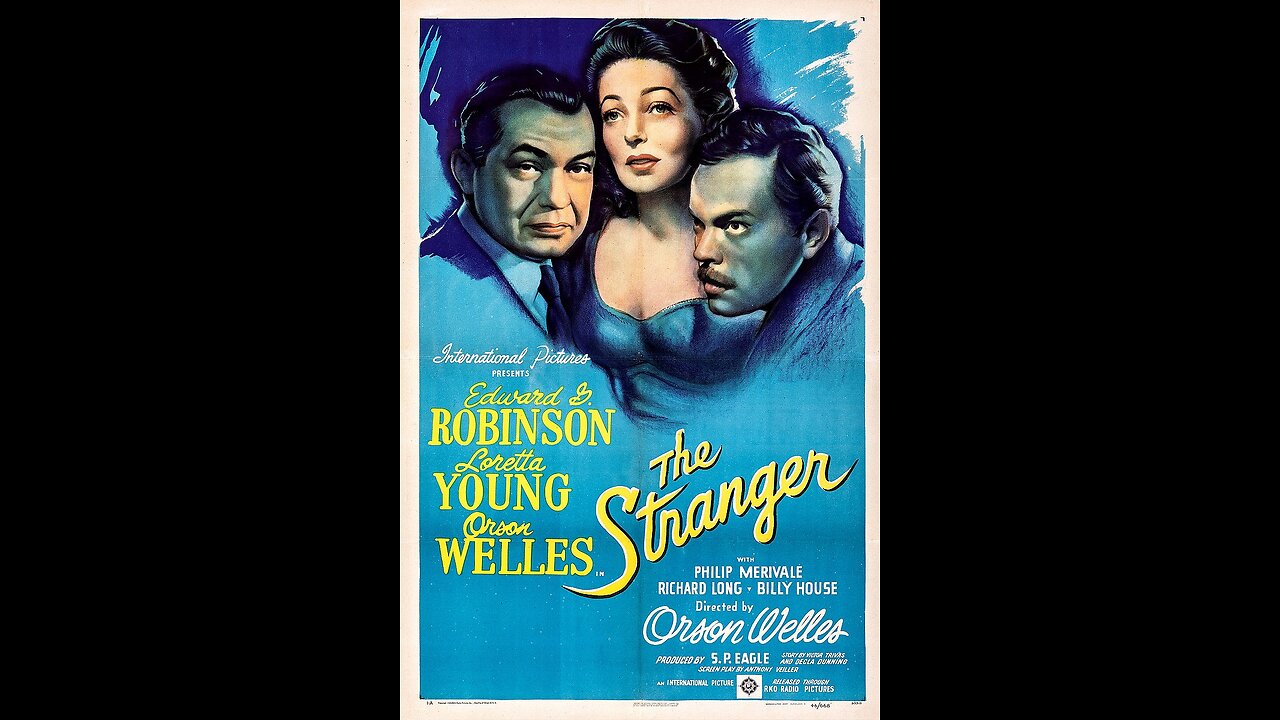
The Stranger 1946 US Bluray 1080p by Orson Welles
The Stranger is a 1946 American thriller film noir directed and co-written by Orson Welles, starring Edward G. Robinson, Loretta Young and Orson Welles. Welles's third completed feature film as director and his first film noir,[4] it centers on a war crimes investigator tracking a high-ranking Nazi fugitive to a Connecticut town. It is the first Hollywood film to present documentary footage of the Holocaust.
The film was nominated for the Golden Lion (then-called the ‘Grand International Prize’) at the 8th Venice International Film Festival. Screenwriter Victor Trivas received an Oscar nomination for Best Story. The film entered the public domain when its copyright was not renewed.
Plot
The Stranger
Mr. Wilson is an agent of the United Nations War Crimes Commission who is hunting for Nazi fugitive Franz Kindler, a war criminal who has erased all evidence which might identify him. He has left no clue to his identity except "a hobby that almost amounts to a mania—clocks."
Wilson releases Kindler's former associate Konrad Meinike, hoping the man will lead him to Kindler. Wilson follows Meinike to a small town in Connecticut, but loses him before he meets with Kindler. Kindler has assumed a new identity as "Charles Rankin", and has become a teacher at a local prep school. He is about to marry Mary Longstreet, daughter of Supreme Court Justice Adam Longstreet, and is involved in repairing the town's 400-year-old Habrecht-style clock mechanism with religious automata that crowns the belfry of a church in the town square.
Meinike attacks Wilson, leaving him for dead, and meets Kindler. Meinike is repentant and has become a Christian, and begs Kindler to confess his own crimes. Instead, Kindler strangles Meinike, who might expose him.
Wilson begins investigating newcomers to the small town. Due to Rankin and Mary's marriage, he does not suspect Rankin—until Rankin says conversationally that since Karl Marx was a Jew, he could not be a German. Even so, not having witnessed the meeting with Meinike, he still has no proof. Only Mary knows that Meinike came to meet her husband. To get her to admit this, Wilson must convince her that her husband is a criminal—before Kindler decides to eliminate the threat to him by killing her. Kindler's facade begins to unravel when Red, the family dog, discovers Meinike's body. To further protect his secret, Kindler poisons Red.
Meanwhile, Mary begins to suspect her husband is not being honest with her. He admits to killing Meinike and Red, but claims Meinike was in town to blackmail her and her father. Mary still loves him and wants to protect him in any way she can; she helps by lying about Meinike. Then Wilson shows her graphic footage of Nazi concentration camps and explains how Kindler developed the idea of genocide. She is torn between her love and her desire to learn the truth. Meanwhile, Kindler tries to arrange a fatal "accident" for Mary, but she discovers the plot. Finally accepting the truth, she dares her husband to kill her face to face. Kindler tries, but is prevented by the arrival of Wilson and Mary's brother, and escapes from the house.
Kindler flees into the church belfry, followed by Mary and then Wilson. Meanwhile most of the town, hearing the repaired clock bell, has arrived outside the building. At the top of the tower, Kindler pulls a gun and a struggle ensues. Mary ends up with the gun and fires. Kindler is shot. He staggers outside to the belfry's clock face, and is impaled by the sword of one of the moving clock figures. Weakened by his injuries, he falls to his death.
Cast
Orson Welles as Franz Kindler/Professor Charles Rankin
Edward G. Robinson as Mr. Wilson
Loretta Young as Mary Longstreet Rankin
Philip Merivale as Judge Adam Longstreet
Richard Long as Noah Longstreet
Konstantin Shayne as Konrad Meinike
Byron Keith as Dr. Jeffrey Lawrence
Billy House as Mr. Potter
Martha Wentworth as Sara
Isabel O'Madigan as Mrs. Lawrence
Pietro Sosso as Mr. Peabody
Erskine Sanford as Party Guest[5]: 197
Theodore Gottlieb as Farbright (not in released version)[5]: 197
Contemporary news items about the production add uncredited and unconfirmed cast members Neal Dodd, Nancy Evans, Fred Godoy, Joseph Granby, Ruth Lee, Lillian Molieri, Gabriel Peralta, Gerald Pierce, Robert Raison, Rebel Randall, Johnny Sands, and Josephine Victor.[1]
Production
Left to right: Edward G. Robinson, Richard Long, Loretta Young, Martha Wentworth, Orson Welles, Philip Merivale, Byron Keith, and an unidentified actress in The Stranger (1946)
Produced by Sam Spiegel (who then billed himself as S. P. Eagle), The Stranger was the last International Pictures Production distributed by RKO Pictures.[6]: 212 Filming took place from late September to November 21, 1945,[7]: 392 at Samuel Goldwyn Studios and Universal Studios. The film's musical score is by Bronisław Kaper.[1]
Spiegel initially planned to hire John Huston to direct The Stranger. When Huston entered the military, Welles was given the chance to direct the film and prove himself able to make a film on schedule and under budget[5]—something he was so eager to do that he accepted a disadvantageous contract. In September 1945 Welles and his wife Rita Hayworth signed a guarantee that Welles would owe International Pictures any of his earnings, from any source, above $50,000 a year if he did not meet his contractual obligations. He also agreed to defer to the studio in any creative dispute.[8]: 309–310 The Stranger was Welles's first job as a film director in four years.[7]: 391
Editor Ernest J. Nims was given the power to cut any material he considered extraneous from the script before shooting began. "He was the great supercutter," Welles said, "who believed that nothing should be in a movie that did not advance the story. And since most of the good stuff in my movies doesn't advance the story at all, you can imagine what a nemesis he was to me."[8]: 311–312
For directing and acting in The Stranger, Welles was to receive $2,000 a week[8]: 309–310 plus $50,000 when the film was completed, and a chance to sign a four-picture deal with International Pictures, making films of his own choosing.[9]: 379
Welles was given some degree of creative control.[5]: 19 He worked on the general rewrite of the script, wrote all of the scenes in the drugstore, and wrote scenes at the beginning of the picture that were shot but subsequently cut by Spiegel and executive producer William Goetz.[7]: 186 [10]: 268 Welles had endeavored to personalize the film and develop a nightmarish tone.[11]: 2:30 There is uncertainty about how much of this material was actually shot and how much was removed. Some scenes elaborated on Meinike's flight through Latin America, shadowed by an agent named Marvales and his wife, a woman in distinctive gold earrings who is murdered by savage dogs kept by the Nazis-in-exile. A brief vestige of the sequence remains in the final release version.[5]: 199–200 In a 1982 interview, Nims said 32 pages of the script were eliminated at his suggestion, including the first 16 pages.[5]: 199
An early scene showing a meeting of Mary and Rankin was filmed but removed. She finds him in the woods, looking at the incongruous 16th-century Gothic clock in the town square, and tells him it was "brought by sailing ship from the shores of the Mediterranean" by one of her ancestors. Rankin is familiar with the clock and her family's history, and as they walk through the cemetery he notes the many Longstreets who are buried there and their patriotic service.[5]: 199
"Character development suffers from the loss of these scenes," wrote film historian Bret Wood, who also observes that inclusion of the Latin American pursuit would have increased the sense of foreboding before the story enters the idyllic town of Harper.[5]: 200–201 A sense of mystery would also have been set up by an imaginative but unrealized pre-title sequence in the Welles version; instead, the titles are simply superimposed over the image of the clock.[5]: 198
Welles wanted Agnes Moorehead to portray the investigator. "I thought it would be much more interesting to have a spinster lady on the heels of this Nazi," Welles said. Edward G. Robinson was cast instead.[7]: 187
Welles planned to use the campus of his alma mater, the Todd School for Boys in Woodstock, Illinois, as the setting for The Stranger. The idea was ruled out by budget restrictions, but a few artifacts are seen in the film. A sign in the gymnasium reads "Harper vs. Todd"[5]: 197 and refers to Clover Hall, a building on the Todd campus, and "Mrs. Collins"—Annetta Collins, teacher, housemother, and director of kitchen services.[12][13] It was Collins who had recruited Welles for Todd in 1926, after meeting the boy at his father's hotel in Grand Detour.[14]: 22 A note on a blackboard, in Welles's handwriting, refers to Wallingford Hall,[11]: 9:03 another building at Todd. A notice on the wall is signed "Coach Roskie"—Anthony C. Roskie, Todd's longtime athletic director.[12]
Perry Ferguson, production designer for Citizen Kane, was borrowed from Samuel Goldwyn Productions.[1] For Welles, Ferguson created a complete town square, an interlocking series of sets in related proximity to each other.[11]: 23:20 Scenes could be filmed that provided deep views of adjacent buildings through windows or reflected in their glass, adding richness and dimension.[11]: 8:21
"When we're filming inside the drug store, we get a sense of depth that is extremely rare in a Hollywood movie," said film historian Bret Wood:
In the shot where Wilson plays checkers with Potter, you can look behind Potter and see a mirror behind him, and through the mirror see Potter and Wilson again, and then see the window behind the camera, and see through that window to cars, buildings and natural sunlight. It's truly radical. If it were deep focus the way Gregg Toland had shot Citizen Kane, maybe it would have been noticed or written about in the last 70-odd years.[11]: 12:32
The set facilitated long takes in which conversations begin indoors, move outside to actual storefronts, and continue across the town square. Welles used long takes as a way to protect the integrity of his film, giving "the great supercutter" nothing to cut away to.[11]: 15:45 The long takes are so subtle that they go unnoticed. At a time when a one-minute take was a rarity,[11]: 12:33 Welles presents one unbroken scene between Kindler and Meinike in the woods that is four minutes long—longer than the bravura opening of Touch of Evil (1958).[11]: 13:21
Welles and Billy House in The Stranger
The character of Potter—a comic druggist who plays checkers—was played by actor Billy House, a burlesque star who became a particular favorite of Welles. The character was not initially a major part of the film, but Welles expanded the role as filming progressed. Feeling that these revisions came at his expense, Edward G. Robinson complained ineffectually to studio executives.[7]: 187–188
Welles recalled Loretta Young's support in a dispute with Spiegel, when the producer ordered a closeup of Young during a medium-full shot of Mary's fight with Kindler. "It would have been fatal," Welles said. "I told that to Loretta, and she said, 'Well then, we're not going to make it.'" When Spiegel continued to insist on the closeup, Young brought in her agent. "Imagine getting a star's agent in to ensure that she wouldn't get a closeup!" Welles said. "She was wonderful."[7]: 188
"No one who worked on the film can remember any special anecdotes or problems concerning it," wrote biographer Frank Brady. "Welles has said, since the making of The Stranger—which he completed one day before schedule and under budget—that nothing in the film was his, this despite the fact that the unmistakable Wellesian moods, shadows, acute angles, and depth-of-focus shots are pervasive. Within the film is a second film, another Wellesian touch, consisting of snatches of documentary footage showing Nazi atrocities."[9]: 379–380 The Stranger was the first commercial film to use documentary footage from the Nazi concentration camps.[7]: 189 [15]
Wilson (Edward G. Robinson) steps into the projected image of the Holocaust footage in The Stranger
"What we tend to forget today is that in the 1940s a large percentage of the population could not believe that the Nazi death camps were real," said Bret Wood.[11]: 100:50 Welles had seen the footage in early May 1945[11]: 102:03 in San Francisco,[16]: 56 as a correspondent and discussion moderator at the United Nations Conference on International Organization.[8]: 304 [17] Welles wrote of the Holocaust footage in his syndicated column for the New York Post (May 7, 1945).[16]: 56–57
No, you must not miss the newsreels. They make a point this week no man can miss: The war has strewn the world with corpses, none of them very nice to look at. The thought of death is never pretty but the newsreels testify to the fact of quite another sort of death, quite another level of decay. This is a putrefaction of the soul, a perfect spiritual garbage. For some years now we have been calling it Fascism. The stench is unendurable.[16]: 56–57 [18]
"It is clear that the visual power of the newsreels had struck him deeply, and it is no surprise that clips from them would be included only a few months later in The Stranger," wrote film scholar Jennifer L. Barker.[16]: 57
Three of the four post-liberation scenes included in The Stranger are from Nazi Concentration Camps (1945), a film assembled by George Stevens, James B. Donovan and Ray Kellogg and used as evidence in the Nuremberg Trials.[11]: 59:55 [16]: 58
Within weeks of the completion of The Stranger, International Pictures backed out of its promised four-picture deal with Welles. No reason was given, but the impression was left that The Stranger would not make money.[
-
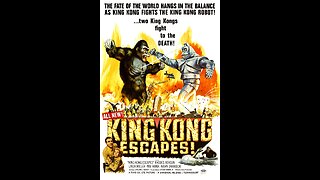 1:36:01
1:36:01
video variety
8 days agoKing Kong Escapes {colorized 4k } 1967 G 1h 36m
1071 -
 LIVE
LIVE
Right Side Broadcasting Network
8 hours agoLIVE: President Trump Holds Press Conference with Israeli PM Benjamin Netanyahu - 2/4/25
14,722 watching -
 LIVE
LIVE
LFA TV
7 hours agoThe Trade War Ends | TRUMPET DAILY 2.4.25 7pm
266 watching -
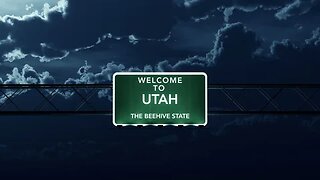 LIVE
LIVE
Quite Frankly
7 hours ago"Capitol Hill Headlines & The Utah Case" ft Lauren Conlin, The Zells 2/4/25
799 watching -
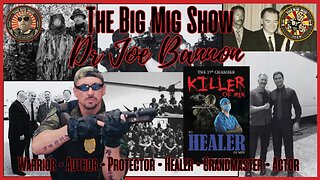 LIVE
LIVE
The Big Mig™
13 hours agoKiller of Men To Healer of Men Dr. Joe Bannon
1,930 watching -
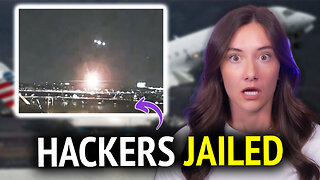 LIVE
LIVE
Chrissy Clark
1 hour agoUSAID’s Corruption, DC Airport Workers ARRESTED, & Ibram X Kendi Canceled?! I Underreported Stories
217 watching -
 17:59
17:59
The Gun Collective
4 hours agoNEW GUNS THAT JUST CAME OUT!
3.06K2 -
 8:36
8:36
RealitySurvival
5 hours agoHow To Protect Your Solar Panels and Inverter From an EMP or CME!
1.98K -
 2:00:23
2:00:23
Revenge of the Cis
4 hours agoEpisode 1440: Shake and Bake
28.7K7 -
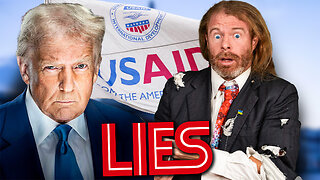 1:15:54
1:15:54
Awaken With JP
7 hours agoUSAID Bombshell - Things Will Never Be The Same - LIES Ep 77
74.4K59